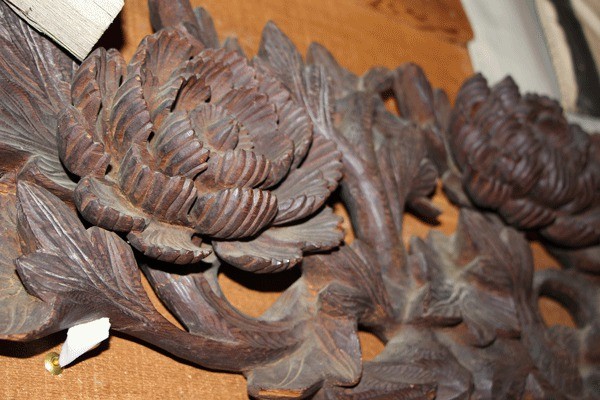Humans have the collecting gene hard-wired into their DNA.
“Countless generations have collected food, tools and art for thousands of years,” said Orcas Historical Museum Director Clark McAbee. “From survivalist to pickers to connoisseurs, we love collecting our ‘stuff.’”
The museum is highlighting its “curiosities” of Orcas Island treasures in a new exhibit entitled “Flotsam and Jetsam – How on Earth did this get to Orcas?” It opens July 11 and runs through October 1.
Visitors can examine items like a life ring from the Mosquito Fleet steamer S.S. Mohawk, a Native American racing canoe paddle and a walrus tusk found on the Bering Sea side of the Aleutian Peninsula across from King Cove in 1915.
McCabe says one of the exhibit’s most intriguing objects is a hand-carved mantel piece. It was gift from a Chinese man who had been tossed overboard by smugglers when the Coast Guard revenue cutter was approaching. Ethan Allen found him the next morning on a local beach and nursed him back to life. In gratitude, he carved Allen the mantel piece out of local cedar.
“We include the weird and the wonderful that island visitors and locals have collected in their travels and brought to Orcas,” McAbee said. “Have you ever seen a Billy club or Shore Patrol baton from the U.S.S. Maine? We have one … all of this is just really cool stuff.”
The Orcas Island Historical Society’s first museum consisted of artifacts displayed on the front porch of a pioneer family’s home. Property for a permanent museum site was eventually obtained in Eastsound, where it still stands today.
In the 1950s and 1960s, various island families donated six original homestead cabins built during the 1870s and the 1890s. Volunteers disassembled the structures, moved them to Eastsound and then reconstructed and linked them together to create the main museum facility. These cabins are now more than 100 years old, and not only house the collections, but are considered important historical artifacts in themselves.
Today, the museum has a permanent collection of 6,000 objects, paper documents and photographs.
From May to September, the museum is open Weds-Sat from 11 a.m. to 4 p.m. and Sunday from noon to 3 p.m.
“Here at the museum we and our esteemed predecessors have collected to preserve, to educate, to inspire, to document and to chronicle our history,” McAbee said.



